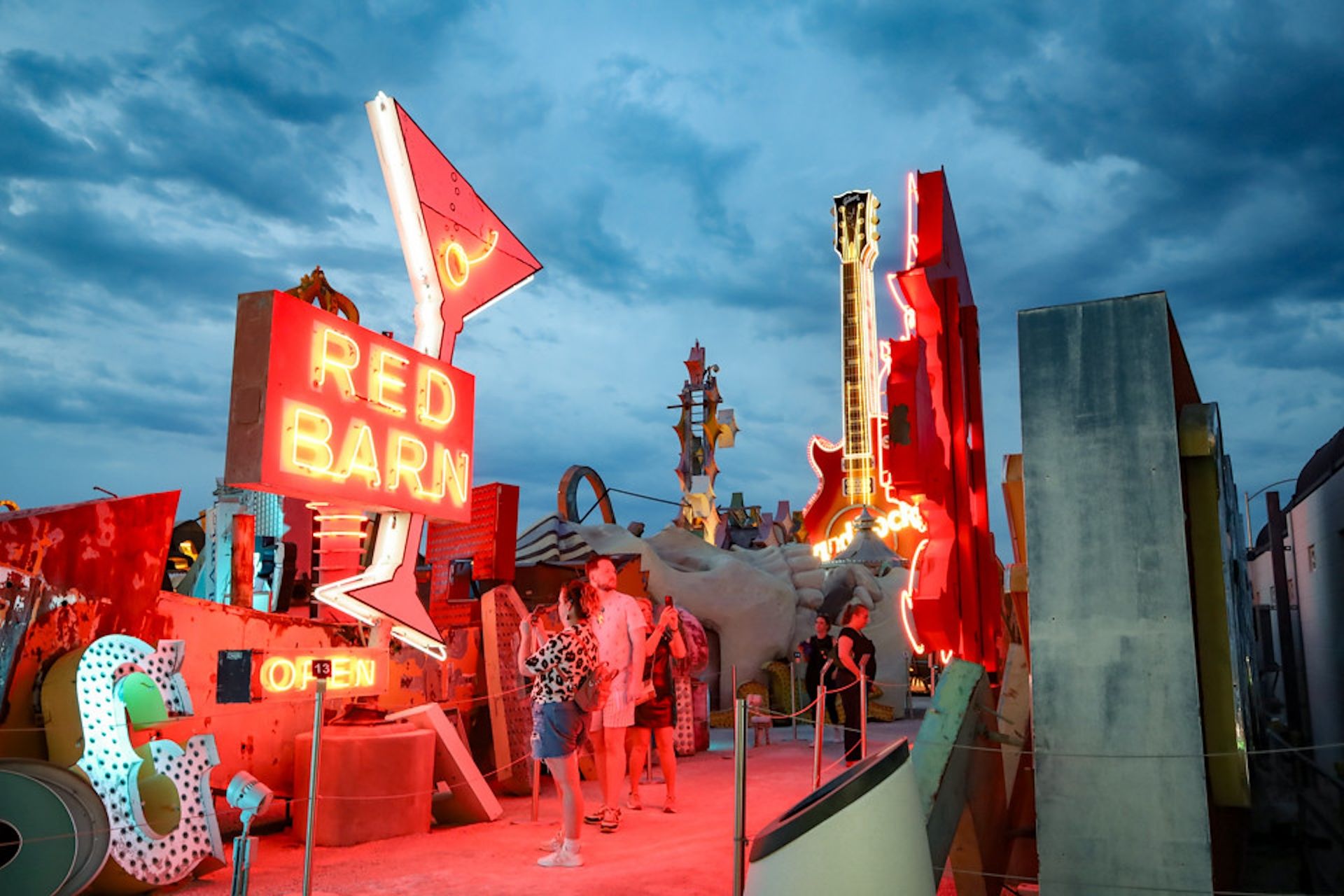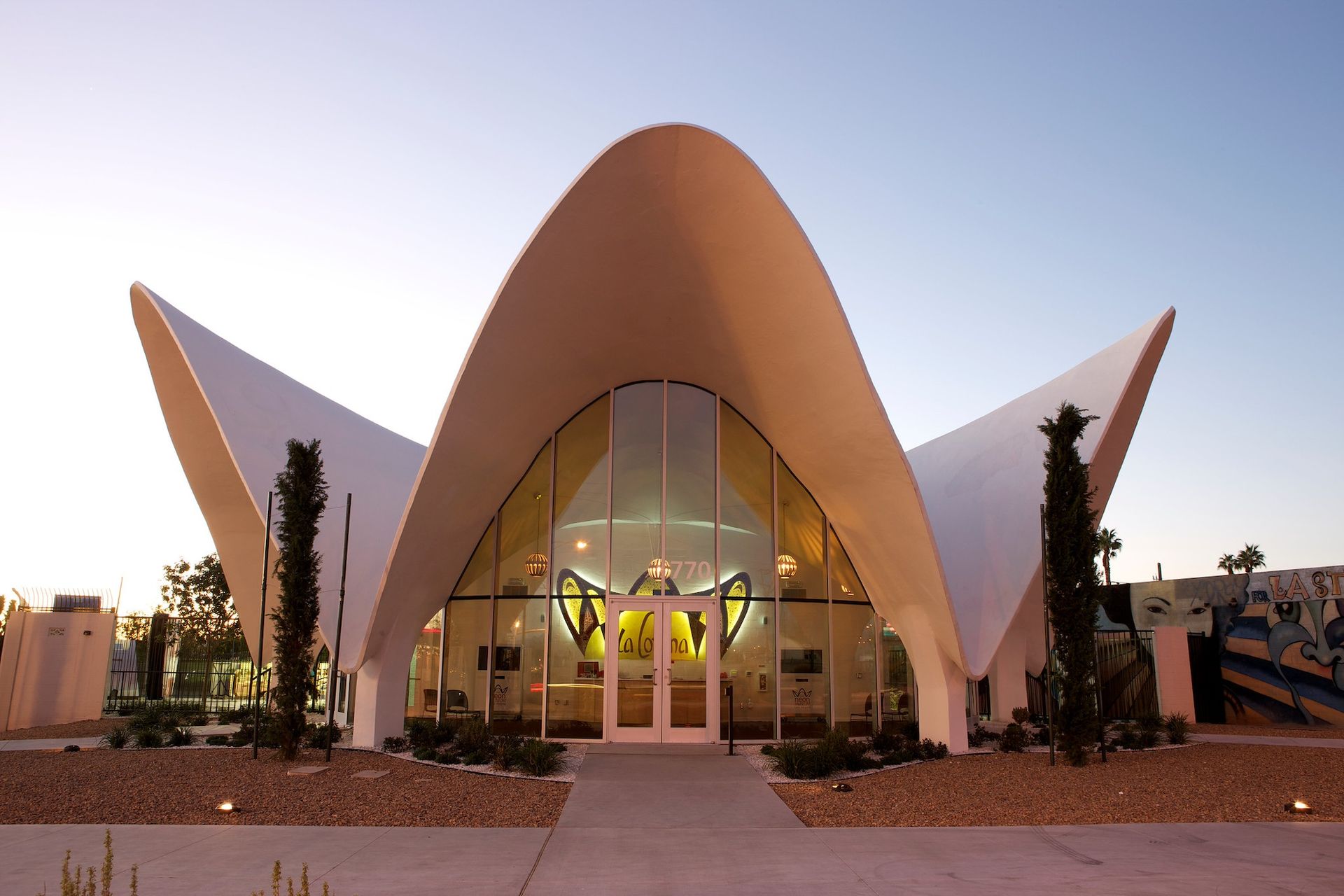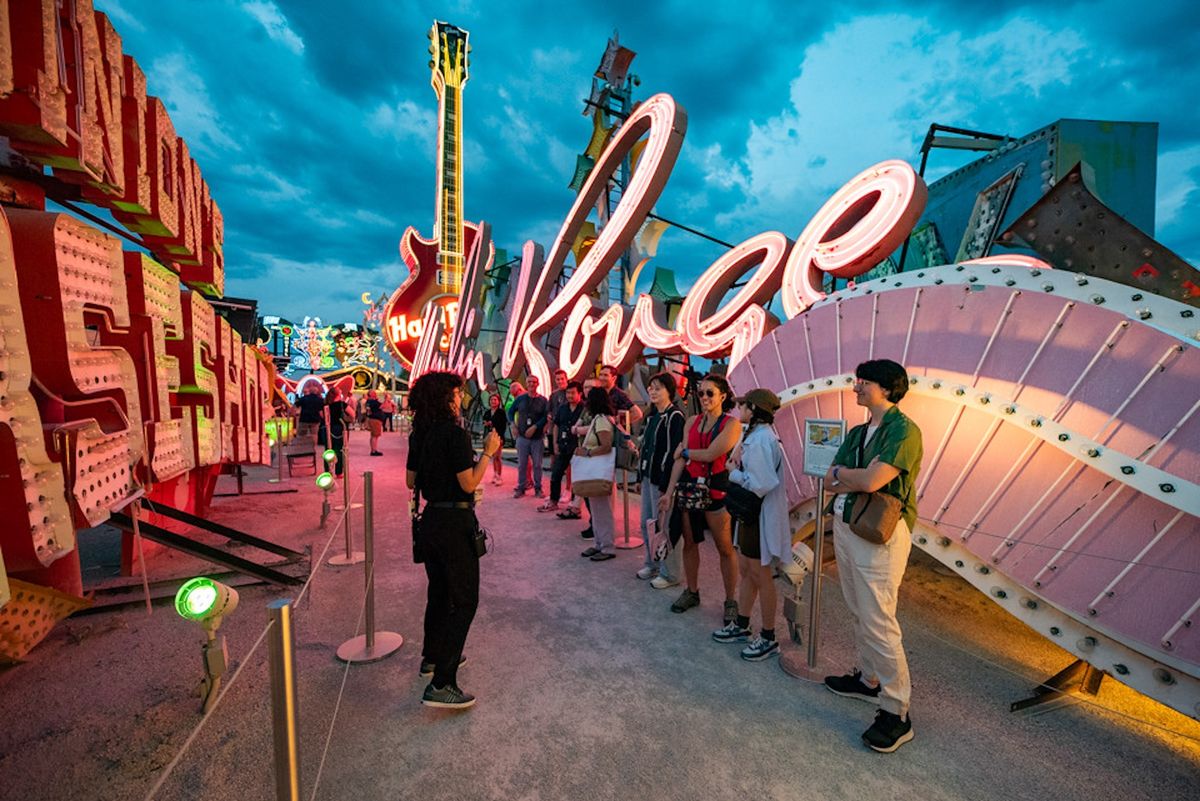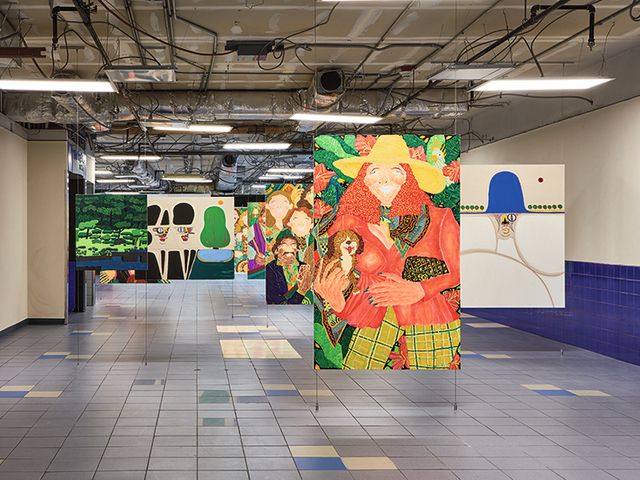The Neon Museum in Las Vegas, a mostly open-air museum that holds a vast collection of historical neon signage and Las Vegas-related art, design and architectural ephemera, is embarking on a $45m expansion and relocation that aims to enhance the visitor experience and make more room for its eclectic holdings.
The museum, which was founded as a non-profit in 1996 and opened to the public in 2012, will move from its current 2.27-acre campus on Fremont Street to a space in the Arts District, where it is scheduled to open in 2027. The long-planned Las Vegas Museum of Art plans to open nearby the following year.
It will be sited in two separate locations: on the ninth and rooftop floors of a parking garage and a 35,000 sq. ft space nearby. The 60,000 sq. ft. rooftop will house the museum’s collection of salvaged neon signage, known affectionately as the “neon boneyard”, while the 47,000 sq. ft ninth floor will be an enclosed exhibition space.
Aaron Berger, the museum’s director, tells The Art Newspaper the museum received more than 200,000 visitors last year, and was forced to reject over 30,000 due to limited capacity.
“We’re at a very pivotal point, which is why we’re redefining what our mission is and then building accordingly,” he says. “Las Vegas has a collection that rivals other major cities, but the difference is that you can enjoy ours with a cigarette and a martini because they’re all in casinos. Still, no one goes to the Palms specifically to see a Damien Hirst. There’s no real appreciation for these works in the context of art history.”

Visitors tour the Neon Museum's outdoor display of salvaged neon signage Courtesy of The Neon Museum, Las Vegas
The museum currently displays just 35% of its neon sign collection, which spans around 500 signs dating back to the 1930s. That does not include its extensive archive and fine art collection, which very rarely surfaces from storage. This still little-known part of the collection comprises around 10,000 photographs and postcards, vintage ephemera like menus and matchbooks, oral histories and contemporary art.
Most of the sign collection is held in costly off-site facilities, and organisers envision that the future museum will have an open-storage component, allowing it to make works accessible even if there is no exhibition plan. “One of the biggest complaints we receive is that people can’t see the things we’re protecting,” Berger says. “We will always continue to accept pieces to make sure that we’re preserving history, so the storage component is necessary. These pieces obviously can’t educate from a closet.”
In its latest rounds of acquisitions, the museum accessioned several pieces from the recently closed Mirage, which was famous for its “volcano show”, a display where fire spewed from two “volcanos” inside a lagoon-like pool. A campaign was previously launched urging the museum to save the beloved volcanos, and, although that was not feasible, it did acquire the igniters, as well as the neon-lettered archway that framed the entrance of the casino.
A centrepiece of the Neon Museum is La Concha, a 1961 building designed for a defunct motel on the Las Vegas Strip by the Modernist architect Paul R. Williams, one of the first Black architects licensed to work in the Western US. In the mid-2000s, the building was moved and repurposed as the Neon Museum’s visitor centre. The museum has assembled a steering committee to oversee its next move, including Karen E. Hudson, Williams’s granddaughter and biographer, and Fred Doumani, the developer who owned La Concha and donated the building to the museum.

La Concha, the 1961 building designed by Paul R. Williams that currently serves as the Neon Museum's visitor centre Courtesy of The Neon Museum, Las Vegas
Because of the transient nature of Las Vegas architecture, the museum has also introduced a memory preservation initiative called Record and Collect Historical Experiences in Las Vegas (Rachel). The project, which typically lives inside La Concha, functions as a video booth where visitors can record their stories about Las Vegas. In the future, organisers hope “Rachel” will be a roving initiative; it was recently installed inside the Tropicana, another historic casino that is set to be demolished next month.
The museum held an artist-in-residency programme between 2016 and 2022 that was partly funded by the National Endowment for the Arts and began as one of the few artist residencies nationwide to support artists working with neon. The programme was put on hold amid administrative changes, but should return under the incoming director of collections and exhibitions. Beyond an honorarium and stipends, artists received curatorial support, meetings with government officials, nature tours, support from neon manufacturers, and access to the collection and archives.
“The programme wasn’t just about academics,” Berger says. “We wanted artists to leave with the flavour of Las Vegas—with an understanding of this one-of-a-kind, circus town that we are, and a better understanding of issues facing the city like homelessness, drug and gambling addiction.”



